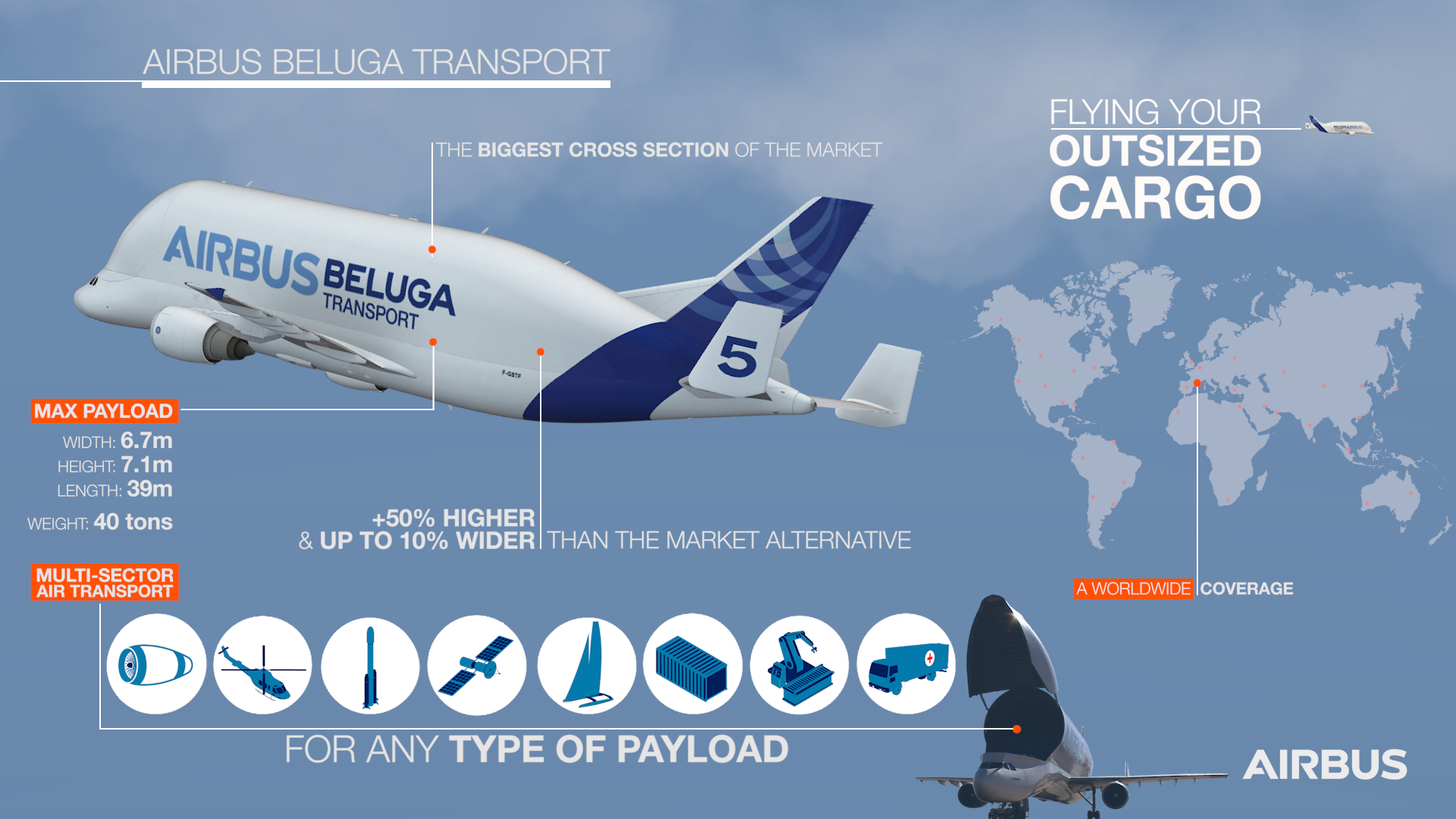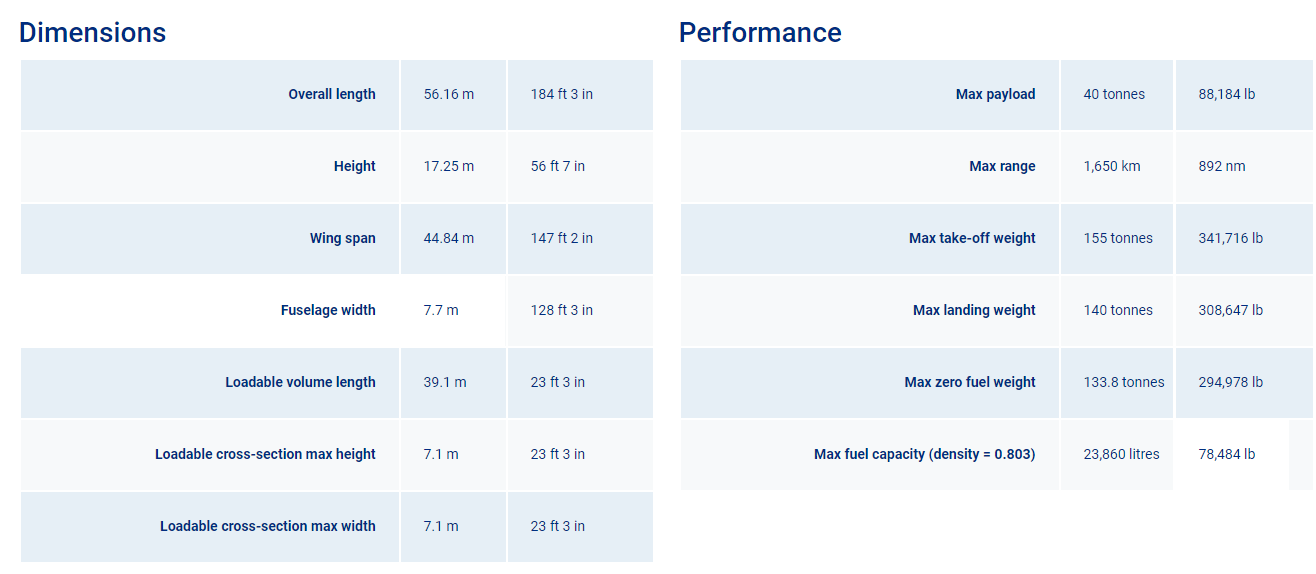UPDATE | Airbus Beluga for the 1st Time in Brazil
Created on July 24, 2022 at 12:00 am (-3 UTC) | Updated on July 26, 2022 at 9:12 pm (-3 UTC)
 |
| Photo © Airbus - Disclosure. |
Read the new scheduled and updated schedule
directly from Airbus.
Known as "Flying Whale" and similar to the marine
animal, the cargo plane Airbus Beluga (A300-600ST Beluga) - underwent changes
in its arrival in Brazil, which was scheduled for Saturday, the 23rd in
Fortaleza, Ceará.
The aircraft registration F-GSTB (named number 2 of the five Belugas built) is already in Brazil for the first time in its entire history. The landing took place this Sunday at 3:24 pm (local time) at Fortaleza International Airport - CE (FOR).
Due to the storm that was in Dakar close to departure time (at 11:04 am Brasília time) heading to Fortaleza, the aircraft suffered further delays and consequently a new schedule was carried out until its final destination in Campinas - SP, at Viracopos Airport ( VCP).
In the afternoon of Saturday, July 23, the Airbus press office informed that the aircraft had changed its schedule in terms of schedules and overnight stay.
The aircraft landed at its final destination, Viracopos Airport (VCP), in the city of Campinas, São Paulo at 1:40 pm on Monday, July 25, 2022.
On the morning of 26 July, cargo aboard the Beluga was unloaded.
Check the previous UPDATED Beluga schedule on the return flight to Europe (with subject to change - All in Brasilia time):
Wednesday, July 27th:
Campinas - Viracopos:
- Departure: 9 am to Fortaleza - CE (Flight BGA - 4005).
Fortaleza - CE:
- Landing: between 12h55 pm (Flight BGA – 4004).
- Departure: 2h pm to Dakar, Senegal (Flight BGA – 4005).
Remembering that the timetables are scheduled and subject to
change by Airbus – All in Brasília time (-3 UTC)
Air Cargo on board the Beluga
The aircraft carried on board a cargo valued at an average of US$ 16 million. It is an ACH160 helicopter, the most technologically advanced in the world, and the first to land in Brazil for a Brazilian customer.
In Viracopos the helicopter will be assembled and then it will be at Congonhas Airport, in São Paulo.
 |
| Photo © Airbus - Disclosure. |
The ACH160 (photo above) is the newest version of the H160, a version
configured with a luxurious interior offering the passenger better lighting,
larger windows, as well as volume of space and comfort compared to previous
generations of helicopters in the category. The prototype received
certification by EASA on July 1, 2020.
“Since the beginning of the year, this plane has been available to
transport special cargo, it is the first time that it will come to Latin
America, and inside it will be an ACH-160 helicopter, purchased by a Brazilian
customer, we will receive this plane in Campinas , in the Azul hangar, for
Brazil will be an interesting fact, and we at Airbus will be very happy to be
receiving this plane here in Brazil”, said Gilberto Peralta, President of
Airbus Brazil.
It is estimated that the helicopter itself will also be present
for the first time at the largest executive and business aviation fair in Latin
America – LABACE 2022 (Latin America Business Aviation Conference &
Exhibition) which takes place between August 9-11 in São Paulo. . In other
words, the two aircraft – Beluga and the ACH160 helicopter – will be in the
country and in the Latin American region for the first time.
In January, Airbus announced the service to offer special cargo
transportation with BelugaST to customers around the world.
As a result, the five BelugaSTs are able to fly unusually sized
payloads for commercial contract customers, serving industries such as engine
manufacturers, space, helicopter and machine manufacturing, oil, gas and power,
land vehicles and other military equipment. , humanitarian supplies, among
others
With the destruction of the Antonov 225, the only prototype and
largest cargo plane in the world, the Beluga gained more space in the heavy air
cargo market, opening great opportunities for new operations when it comes to
heavy logistics.
The Beluga in Summary
The Belula was initially developed in August 1991, based on the
Airbus A300, capable of transporting fuselage sections of other aircraft and
large loads for the manufacturer Airbus located in Germany, France, the United
Kingdom and Spain. However, since its maximum load capacity is only 47 tons, it
takes loads that are large in volume, not so much in weight.
Just three years later, in 1994, the first prototype rolled out in
Toulouse. The first flight took place on September 13, 1994 and started the
approval process, received in mid-1995 after 400 test flights. The first unit,
the old prototype, went into operation at Airbus in January 1996. Delivery of
the fourth unit took place in June 1998.
The Beluga has the same wing, engines, lower fuselage, main
landing gear and cockpit as the A300. The main change is the huge fuselage,
equipped with a clamshell door at the front, which forced a repositioning of
the cockpit. The tail was also modified, with the use of small vertical
stabilizers installed on the horizontal ones. However, the original vertical
stabilizer was retained. The rudder was only on the main vertical stabilizer.
The Beluga fleet is controlled and managed by SATIC, a company
formed in partnership between Aérospatiale and DASA. In addition to
transporting parts for Airbus, SATIC also offers the plane's large volumetric
capacity (1400m³) for the transport of bulky loads, which ended up justifying
the introduction into service of a fifth aircraft, incorporated into the fleet
in 2000.
*DISCLAMER:
The aviation news website MAIS QUE VOAR (MORE THAN FLY) does not
agree with Fakenews. This publication contains content with sources from Airbus
press.
This publication was written in Portuguese (Brazil) and
automatically translated by Google robots to English. MORE THAN FLY, adopted
Google technology for everyone around the world to have access to information
and optimize our time and budget with translations. We ask for common sense to
take into account translation errors. After all, every robot is limited and is
never compared to the superiority of a human intelligence.







Nenhum comentário:
Postar um comentário